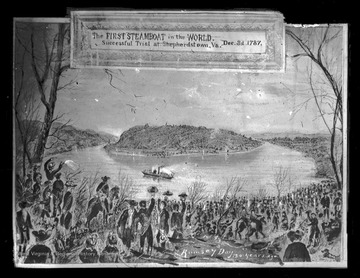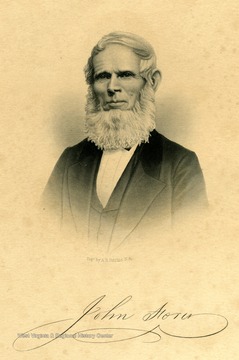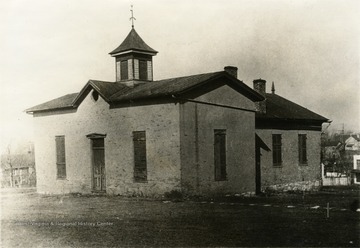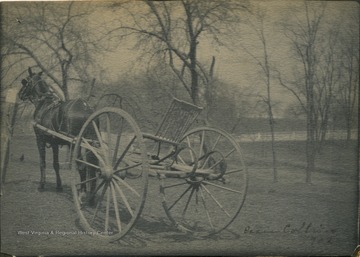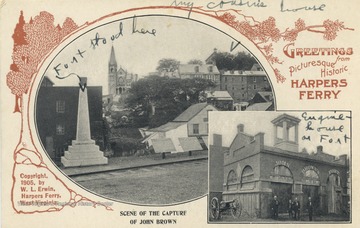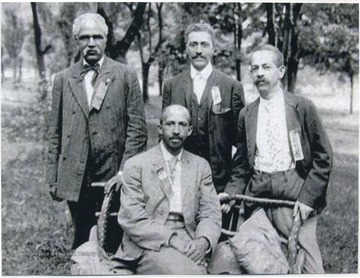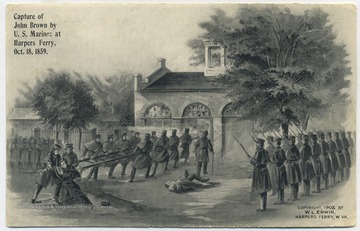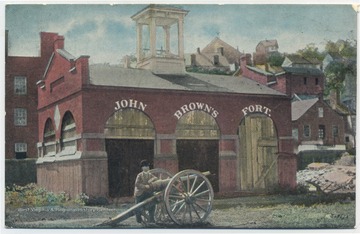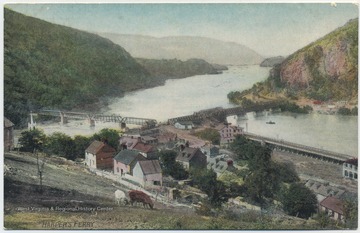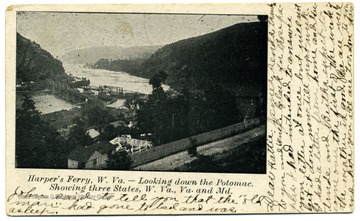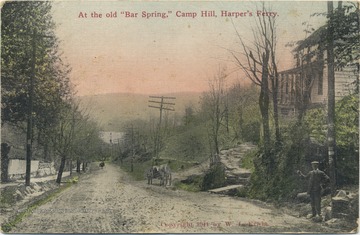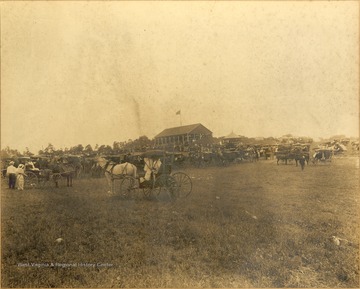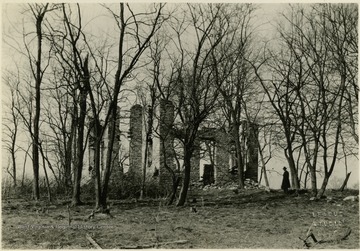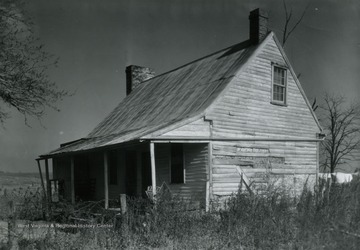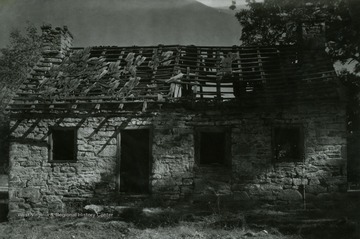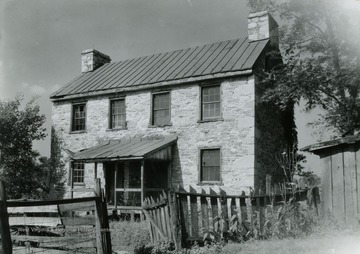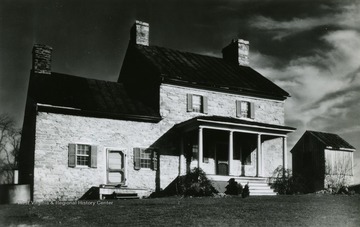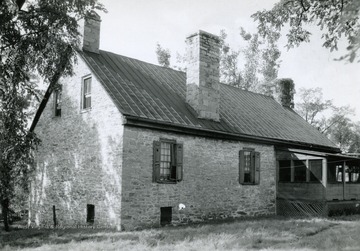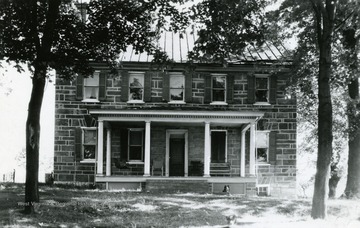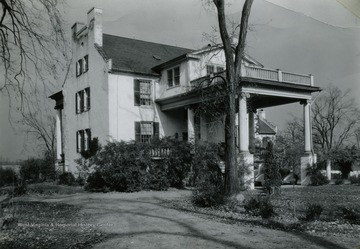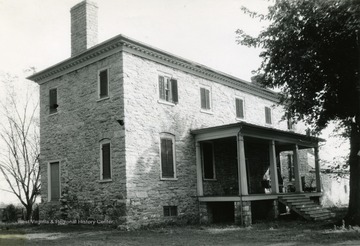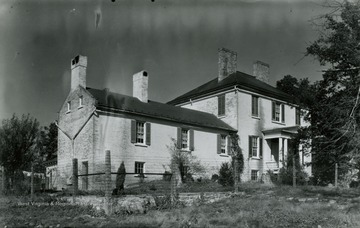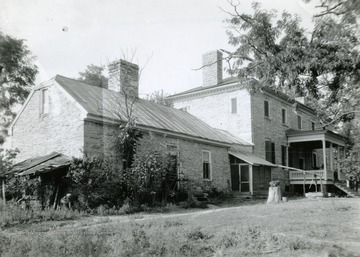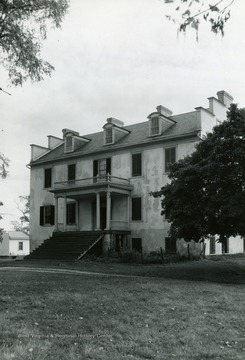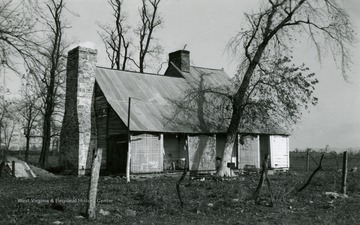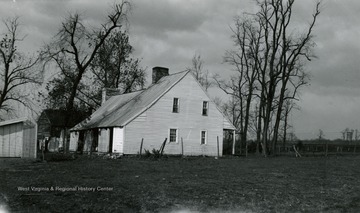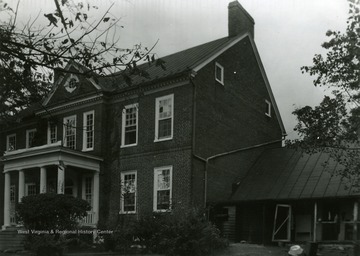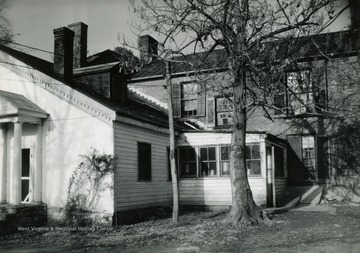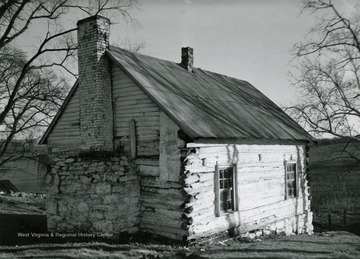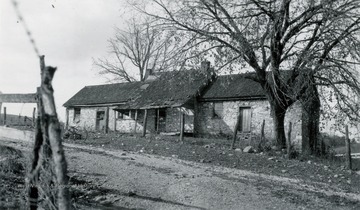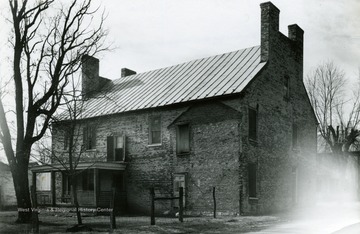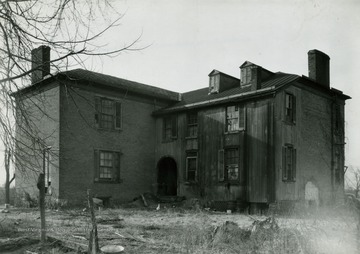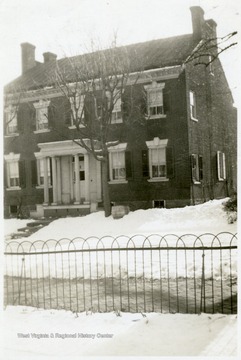Search Constraints
« Previous |
1 - 48 of 304
|
Next »
Search Results
IDNO:
046793
Title:
Illustrated Scene of People Celebrating James Rumsey's Successful Trial of the First Steamboat in the World, Shepherdstown, W. Va.
Date:
1787/12/03
Description:
James Rumsey was the inventor of the first steamboat.
IDNO:
030092
Title:
Engraving of John Storer of Sanford, Maine
Date:
1860~
Description:
Soon after the Civil War, John Storer contributed $10,000 towards establishing a college in Harpers Ferry, W. Va. This institution of higher learning was the first college below the Mason- Dixon Line to accept students "without distinction of race or color". The school bears the name of it's principle benefactor, Storer College.
IDNO:
013072
Title:
Charles Town Academy, Jefferson County, W. Va.
Date:
1877
Description:
'From an article in the Morgantown Post published in August 6, 1938. Charles Town Academy, one of the first W. Va. academies, was founded in 1979. Three sons of James Madison, 4th President of the United States, were educated here. This photograph was taken in 1877.'
IDNO:
013056
Title:
Charles Town Academy, Jefferson County, W. Va.
Date:
1877
Description:
View of the Charles Town Academy, one of the first West Virginia academies, founded in 1797. Three sons of James Madison, fourth president of the United States, were educated here.
IDNO:
048250
Title:
J.H. Smith Residence, Martinsburg, W. Va.
Date:
1901/10/10
IDNO:
029196
Title:
View from Loudoun Heights of Harpers Ferry and Bolivar Heights, W. Va.
Date:
1901/11
IDNO:
037795
Title:
Old Fairfax 'Gig', Jefferson County, W. Va.
Date:
1902
Description:
A horse harnessed to a "gig" owned by Ferdinand Fairfax, nephew of Lord Thomas Fairfax. Ferdinand lived at Shannon Hill on the Shenandoah River in Jefferson County, Virginia, later West Virginia.
IDNO:
044462
Title:
Scene of the Capture of John Brown in Harpers Ferry, W. Va.
Date:
1905
Description:
(From postcard collection legacy system--subject.)
IDNO:
045683
Title:
Niagara Movement Leaders at Storer College, Harpers Ferry, W. Va.
Date:
1906-08-15
Description:
Seated is W.E.B. Du Bois. Standing, from left to right, is J. R. Clifford, L. M. Hershaw, and F. H. M. Murray.
IDNO:
050482
Title:
Women of Niagara Movement, Harpers Ferry, W. Va.
Date:
1907
Description:
Women of the Niagara Movement at Storer College in Harpers Ferry, W. Va. Left to right are Mrs. O. M. Waller, Mrs. H. F. M. Murray, Mrs. Mollie Lewis Kelan, Mrs. IdaD. Bailey, Miss Sadie Shorter, and Mrs. Charlotte Hershaw. Mrs. Gertrude Wright Morgan is seated.
IDNO:
044468
Title:
Street Scene in Charlestown, During Trial of John Brown, Showing Jail and Court House
Date:
1908
Description:
Published by W. L. Erwin. (From postcard collection legacy system--subject.)
IDNO:
044469
Title:
Capture of John Brown by U. S. Marines at Harpers Ferry, October 18, 1859
Date:
1908
Description:
Published by W. L. Erwin. (From postcard collection legacy system--subject.)
IDNO:
044461
Title:
John Brown's Fort, Harpers Ferry, W. Va.
Date:
1909
Description:
Copyright by National Tribune. See original for postcard historical information on John Brown's fort. (From postcard collection legacy system--subject.)
IDNO:
044464
Title:
Harpers Ferry, W. Va.
Date:
1909
Description:
Copyright by National Tribune. See postcard for historical information on Harpers Ferry. (From postcard collection legacy system--subject.)
IDNO:
048220
Title:
Bolivar Heights and Camp Hill at Harper's Ferry, W. Va.
Date:
1909
IDNO:
048206
Title:
Large Ivy Covered Farm House Near Harper's Ferry, W. Va.
Date:
1909
IDNO:
029197
Title:
Looking Down the Potomac at Harper's Ferry, W. Va.
Date:
1909/03/13
Description:
Showing Three States, W. Va., Va., and Md.
IDNO:
042643
Title:
At the Old 'Bar Spring', Camp Hill, Harpers Ferry, W. Va.
Date:
1911
Description:
See original for correspondence. (From postcard collection legacy system.)
IDNO:
037791
Title:
Horse Show, Charles Town, W. Va
Date:
1913
IDNO:
037958
Title:
First Charles Town Horse Show, Jefferson County, W. Va.
Date:
1913/08/07
Description:
Horse drawn buggies crowd around the show grounds and people fill the grandstand for the competitions
IDNO:
013046
Title:
Rouse Apple Cold Storage Building, Jefferson County, W. Va.
Date:
1918/09/06
IDNO:
013047
Title:
Rouse House, Kabletown, Jefferson County, W. Va.
Date:
1918/09/06
IDNO:
048249
Title:
Rouse House, Kabletown, W. Va.
Date:
1918/09/06
IDNO:
037829
Title:
School Children in American Legion Parade, Charles Town, W. Va.
Date:
1921
IDNO:
002931
Title:
United Mine Workers Leaders and Lawyers at Jefferson County Courthouse, Charles Town, W. Va.
Date:
1922
Description:
Group portrait of United Mine Workers leaders and lawyers at Jefferson County Courthouse, W. Va. Front Row, Left to Right; James M. Mason, C. J. Van Fleet, Samuel B. Montgomery, Harold Wilkins Houston, William Blizzard, John L. Lewis, Charles Franklin Keeney.
IDNO:
037886
Title:
Ruins of St. George Chapel on Middle Way Pike Near Charles Town, W. Va.
Date:
1931/12
Description:
George Packette is the man standing near the ruins.
IDNO:
041082
Title:
Newton Vickers Home, Jefferson Co., W. Va.
Date:
1934
Description:
View from the south west.
IDNO:
041091
Title:
Effie McIntyre Home, Kearneysville, W. Va.
Date:
1936
Description:
View from the southwest.
IDNO:
041093
Title:
Level Green Slave Quarters Outbuilding, Jefferson Co., W. Va.
Date:
1936
IDNO:
041094
Title:
Traveler's Rest Slave Quarters, Jefferson Co., W. Va.
Date:
1936
Description:
View of outbuilding from south-east.
IDNO:
041095
Title:
Nathan Haines House, Summit Point, W. Va.
Date:
1936
Description:
Also known as the Fairfax Grant Stock Farm, built ca. 1775.
IDNO:
041096
Title:
Meathouse, Jefferson Co., W. Va.
Date:
1936
Description:
Outbuilding which is probably a meat house on a large farm, viewed from the south-west.
IDNO:
041100
Title:
Traveler's Rest, Jefferson Co., W. Va.
Date:
1936
Description:
View of the Horatio Gates home from the north-east.
IDNO:
041101
Title:
Osborn House, Shenandoah Junction, Jefferson Co., W. Va.
Date:
1936
IDNO:
041104
Title:
Jacob Morgan Steptoe House, Shepherdstown, W. Va.
Date:
1936
Description:
Named Falling Spring and located near Shepherdstown, West Virginia. The structure was built by Jacob Morgan in 1841. Viewed from the south-east.
IDNO:
041105
Title:
Harewood Near Charles Town, W. Va.
Date:
1936
Description:
Built by Samuel Washington, younger brother of George Washington in 1770. Viewed from the north-west.
IDNO:
041107
Title:
Cedar Lawn, Jefferson Co., W. Va.
Date:
1936
Description:
Built by John Thornton Augustine Washington, grand-nephew of George Washington, in 1825. View from the south-east.
IDNO:
041106
Title:
Harewood Near Charles Town, W. Va.
Date:
1936
Description:
Built by Samuel Washington, younger brother of George Washington, in 1770. View from the south-east.
IDNO:
041108
Title:
Woodbury, Jefferson Co., W. Va.
Date:
1936
Description:
Located near Leetown and built in 1835 by Federal Judge Henry St. George Tucker. View from the south-east.
IDNO:
041111
Title:
Peter Burr House Near Bardane, Jefferson Co., W. Va.
Date:
1936
Description:
Handhewn clapboard house was built ca. 1751. Peter Burr was first cousin to United States Vice President Aaron Burr.
IDNO:
041110
Title:
Peter Burr House Near Bardane, Jefferson Co., W. Va.
Date:
1936
Description:
Handhewn clapboard house was built ca. 1751. Peter Burr was first cousin to United States Vice President Aaron Burr.
IDNO:
041112
Title:
Piedmont Near Charles Town, Jefferson Co., W. Va.
Date:
1936
Description:
John Worthington built the original structure in 1735. Dr. John Briscoe remodeled the house to it's present day appearance in 1780. View from the south-west.
IDNO:
041115
Title:
Rosebrake, Dandridge House, Jefferson Co., W. Va.
Date:
1936
Description:
The "back House' shown in the is photograph was built in ca. 1737 by Richard Morgan, and grandson, Daniel Morgan built the "Great House" ca. 1800.
IDNO:
041120
Title:
Elmwood Slave Quarters, Jefferson Co., W. Va.
Date:
1936
Description:
Slave quarters and outbuilding viewed from the South East. Also known as the R. Lucas House.
IDNO:
041225
Title:
Vestal House Out Building, Near Charles Town, W. Va.
Date:
1936
Description:
Possibly part of the Vestal or Shenandoah Bloomery, the first ironworks west of the Blue Ridge Mountains. William Vestal operate the ironworks built on his land, from 1742 to 1760.
IDNO:
041102
Title:
Grantham House, Middleway, Jefferson Co., W. Va.
Date:
1937
Description:
Also called Tudor Hall. Built ca. 1820, the view is from the north-east.
IDNO:
041114
Title:
Ranson House, Ranson, Jefferson Co., W. Va.
Date:
1937
Description:
House was built in ca. 1845. Since the photograph was taken the house has been demolished.
IDNO:
035084
Title:
Old Selby Tavern, Shepherdstown, W. Va.
Date:
1941/02/05
Description:
The Selby-Hamtramck House, the "most fashionable hotel in town."
